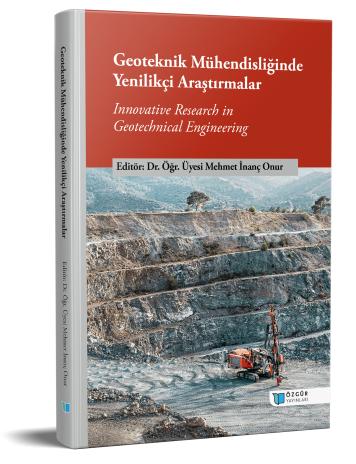
Zeminlerde Kimyasal Stabilizasyon Uygulamaları ve Kullanılan Malzemeler
Şu kitabın bölümü:
Onur,
M.
İ.
(ed.)
2023.
Geoteknik Mühendisliğinde Yenilikçi Araştırmalar.
Özet
İstenilen özelliklere sahip olmayan doğal zeminlerin taşıma kapasitesinin ve diğer mühendislik özelliklerinin iyileştirilmesi zeminlerin stabilizasyonu ile mümkün olmaktadır. Zemin stabilizasyonu kimyasal, mekanik veya termal yöntemlerle zeminin iyileştirilmesini ifade eder. Bu şekilde zeminin dayanıklılığı artırılarak, hacim değişimi ve su geçirgenliği azaltılarak veya diğer mühendislik özellikleri geliştirilerek yapıların güvenli ve sağlam bir temel üzerine oturtulması sağlanabilir. Zemine kimyasal katkı maddeleri ekleyerek, zeminin dayanıklılığını ve taşıma kapasitesinin artırılması en eski zemin iyileştirme yöntemlerinden biri olup binlerce yıldır uygulanmaktadır. Bu katkı maddeleri genellikle çimento, kireç, uçucu kül ve diğer kimyasal maddeleri içerebilir. Bu katkılar, genellikle ucuz, yerel olarak bulunabilir, biyolojik olarak parçalanabilir ve çevre dostu malzemelerdir. Dolayısıyla, bu malzemelerin tek tek veya kombinasyon halinde kullanılması, taban zeminlerinin özelliklerinin iyileştirilmesinde birçok avantaj sağlar ve üst yapıların performansını önemli ölçüde arttırır. Bu çalışmada kimyasal stabilizasyon yönteminde kullanılan katkı malzemeleri incelenmiş, zeminin özellikleri, projenin gereksinimleri ve yerel koşullar göz önüne alınarak uygun bir stabilizatör seçimi için kullanılan katkı malzemeleri ile elde edilen kazanımlar literatürde bulunan deneysel araştırma sonuçları ile somutlaştırılmıştır.

